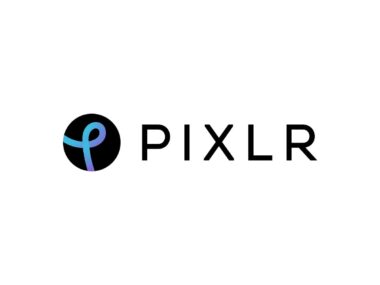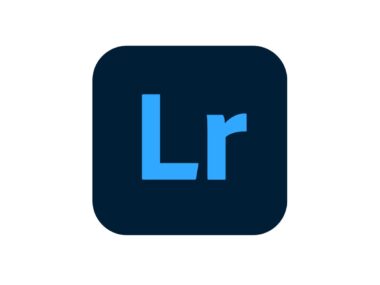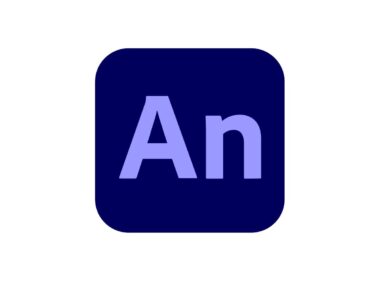Table of Contents
Key Features of Midjourney Design Software
Midjourney is a cutting-edge design software that specializes in generating AI-powered images from text prompts. It is highly regarded for its ability to enable rapid exploration of new ideas and concepts. Users appreciate Midjourney for its simplicity and ease of use, where the only requirements are accurate prompts and creativity. The software has been described as a fascinating implementation of a generative predictive text AI model, producing original and artistic outputs.
Key features and unique aspects of Midjourney include:
- Ease of Use: Midjourney is straightforward to use, allowing users to create a wide range of visuals regardless of their actual art skills.
- Generative Predictive Text AI Model: The software uses a sophisticated AI model to transform prompts into stunning images, which are often described as mind-blowing in their originality and artistic value.
- Creativity and Productivity Enhancement: It empowers users to visually express their ideas, create images for articles and websites, and even generate avatars for social accounts.
- Wide Application: From producing business card designs to avatars and artwork, Midjourney is versatile in its application across various creative domains.
- Community Feedback: Midjourney has garnered an overall positive response from its user community, with a rating of 4.5/5 based on 78 reviews.
- Drawbacks and Challenges: Some users have expressed concerns about content filtering, lack of customer support, and issues with the pricing model. There’s also a call for Midjourney to move from Discord to a dedicated app for a better user experience.
Midjourney’s approach to AI-generated art is innovative and has sparked a great deal of interest in the creative community. Its ability to produce images with aesthetic value and its user-friendly nature make it a compelling choice for individuals and businesses seeking to leverage AI in their creative processes. However, like any emerging technology, it faces challenges and areas for improvement, particularly in customer support and platform accessibility.
Performance
Midjourney, a transformative AI design software, has demonstrated significant impact and usability in day-to-day operations, particularly in the fields of graphic design and branding. The software, accessible through a Discord bot, enables the creation of diverse images from textual prompts. Users find Midjourney to be a powerful tool for exploring new design styles, generating varied ideas quickly, and efficiently creating art across different emotions, time frames, art mediums, color palettes, and environments.
In practical application, the effectiveness of Midjourney hinges on the precision of the prompts provided. The software decomposes these prompts into smaller components, enabling users to generate images based on detailed descriptions, image references, and various adjustable parameters like aspect ratios, quality, and style. This flexibility and responsiveness to user input make Midjourney a valuable asset for graphic designers, allowing them to conceptualize and visualize ideas rapidly.
For instance, when tasked with creating a logo for a hypothetical brand, a graphic designer used Midjourney to generate a logo icon by providing specific prompts about the desired imagery, such as a castle with neutral colors, soft edges, and a particular outline. This process exemplifies Midjourney’s ability to transform abstract concepts into tangible visual representations, streamlining the ideation phase of design projects.
Moreover, Midjourney proves useful in generating realistic product imagery and mock-ups, essential elements in the design and advertising industries. Designers can specify types of furniture and decorations, mood, and interior design style, enabling Midjourney to create tailored and brand-specific visualizations. This capability significantly assists in the conceptualization and presentation stages of design projects.
Despite its advantages, Midjourney is not without limitations. While it provides a rapid start and a wealth of inspiration, there remains a gap between the AI-generated output and the finalized product envisioned by designers. Detailed images may require additional refinement using other design tools, such as Photoshop, to correct imperfections and fully align with the brand’s visual identity.
Overall, Midjourney is a powerful tool in the designer’s toolkit, offering immense possibilities for creative exploration and rapid prototyping. It does not replace the need for graphic designers but rather complements their skill set, allowing them to explore more ideas at an unprecedented rate and significantly reduce the time spent on creating mock-ups and visualizing different design approaches.
Pros
- High Aesthetic Quality: Known for its aesthetically pleasing images, Midjourney excels in creating visually appealing content, often surpassing other AI tools in this regard.
- Variability in Output: It can generate a vast array of different images based on user descriptions, fostering unique and creative results.
- No Creative Block: Unlike human artists, Midjourney can continuously generate new and unique images without experiencing creative blocks.
- Speed: The software is capable of producing images quickly, which is crucial for efficient and timely creation of visual content.
- High-Resolution Output: Midjourney offers some of the highest resolutions for final pictures, avoiding the need for additional image enhancement tools.
- Observation of Composition Process: For design students, observing how Midjourney adjusts colors and shapes during the image generation process can be educational and insightful.
Cons
- Chaotic Trial Version: The free trial version, operated through a chatbot, can be overwhelming due to the high volume of messages and images in the chat, making it a less user-friendly experience.
- More Complicated Access: Unlike other web-based AI tools, Midjourney requires registration and use through Discord, which can be a deterrent for users not keen on using social media platforms for this purpose.
- Limited Editing Capability: Once an image is created, Midjourney does not offer an editing option within the app, necessitating the use of external editing software for further refinement.
- Limited Functionality: The AI may struggle with generating specific color schemes, unusual styles, or full-length characters, although improvements in these areas are ongoing.
- Legal Nuances for Image Use: Without a paid subscription, images generated by Midjourney cannot be used for commercial purposes, limiting the free version’s utility for professional use.
- Language Limitation: Midjourney operates only in English, which could be a significant limitation for non-English speaking users.
- Image Resolution Limitations: There are restrictions on downloading images in high resolution, which might be problematic for print applications like banners or posters.
In summary, Midjourney offers a unique combination of creative freedom, high-quality image generation, and educational insights for design students and professionals. However, it also presents challenges related to user experience, functionality, and legal aspects of image usage. These factors should be carefully considered by anyone looking to incorporate Midjourney into their design workflow.
Conclusion
Midjourney’s impact on the world of architecture and design offers a unique blend of opportunities and challenges, as highlighted by industry experts. This AI-driven design software is revolutionizing traditional processes, enabling architects and designers to explore and visualize ideas with unprecedented speed and creativity. However, it’s essential to navigate its capabilities and limitations with an informed and critical perspective.
Opportunities Presented by Midjourney
- Revolutionizing Design Processes: Midjourney is a valuable tool for architects and designers, particularly during conceptual phases. Its ability to rapidly generate diverse visuals from text input allows for efficient exploration of innovative ideas.
- Enhanced Creative Exploration: The software serves as a digital artist with a deep understanding of forms, shapes, and styles, significantly enhancing the creative process. By learning from vast architectural datasets, it suggests innovative ideas and styles, effectively acting as a creative assistant for architects.
- Streamlined Workflow and Time Efficiency: Midjourney accelerates the design process, enabling architects to rapidly generate and explore diverse concepts, saving substantial time compared to traditional manual methods.
Challenges and Considerations
- Bias in AI and Cultural Representation: There’s a concern regarding the biases present in AI’s training datasets. Midjourney, like other AI tools, can reflect biases in its image generation, limiting its effectiveness in accurately representing diverse cultural and architectural styles.
- Training Data and AI Model Limitations: The content fed into Midjourney’s AI model influences its output. This raises concerns about the nature of internet culture and its impact on the AI’s training, potentially leading to the generation of biased or inappropriate imagery.
- Lack of Detail in Architectural Representation: Midjourney’s images, often based on renderings or photographs, may lack detailed architectural elements like windowsills or specific plans, limiting its utility in capturing the nuances of everyday architecture.
- Potential in Technical Drawings and Computational Design: There’s a latent potential for AI tools like Midjourney to contribute to more technical aspects of design, such as producing detailed drawings or navigating competing outcomes in architectural projects.
- Educational Value in Developing Design Sensibility: For students and emerging designers, Midjourney can be a tool for rapidly developing a design sensibility. The constant evaluation and decision-making required in the AI-driven design process can be an invaluable learning experience.
Expert Perspectives
- Andrew Kudless: Highlights the utility of Midjourney in communicating a project’s mood and aspirations quickly, beneficial for both design exploration and client presentations.
- Kory Bieg: Compares his use of AI to an archaeological process, uncovering insights within the AI-generated images, thereby deepening understanding of design concepts and AI’s capabilities.
- Shelby Doyle: Expresses concerns about the biases in AI-generated imagery, emphasizing the need to critically assess and potentially recalibrate AI datasets for a more inclusive and accurate representation of diverse architectural styles and cultures.
In summary, Midjourney offers a powerful platform for architects and designers to push the boundaries of creativity, efficiency, and innovation. However, it’s crucial to remain vigilant about the biases inherent in AI models and the limitations in representing diverse architectural styles. As the field of AI in architecture evolves, these challenges present opportunities for improvement and more inclusive design practices.
FAQs
-
What is Midjourney?
Midjourney is an AI-driven design software that uses advanced algorithms to transform text prompts into visually stunning images, catering to architects, designers, and creatives.
-
How does Midjourney work?
Users input descriptive text prompts into Midjourney, which then generates unique images based on these descriptions using machine learning and a vast database of architectural and design imagery.
-
Who can benefit from using Midjourney?
Midjourney is ideal for architects, graphic designers, creatives, and students in design fields looking to rapidly explore and visualize ideas.
-
Can Midjourney create images for specific architectural styles?
Yes, Midjourney can generate images reflecting various architectural styles, depending on the specificity and detail of the text prompts provided by the user.
-
Is there a learning curve to using Midjourney effectively?
While Midjourney is user-friendly, mastering prompt engineering to generate images closely aligned with specific design objectives may require some practice and understanding of AI capabilities.





